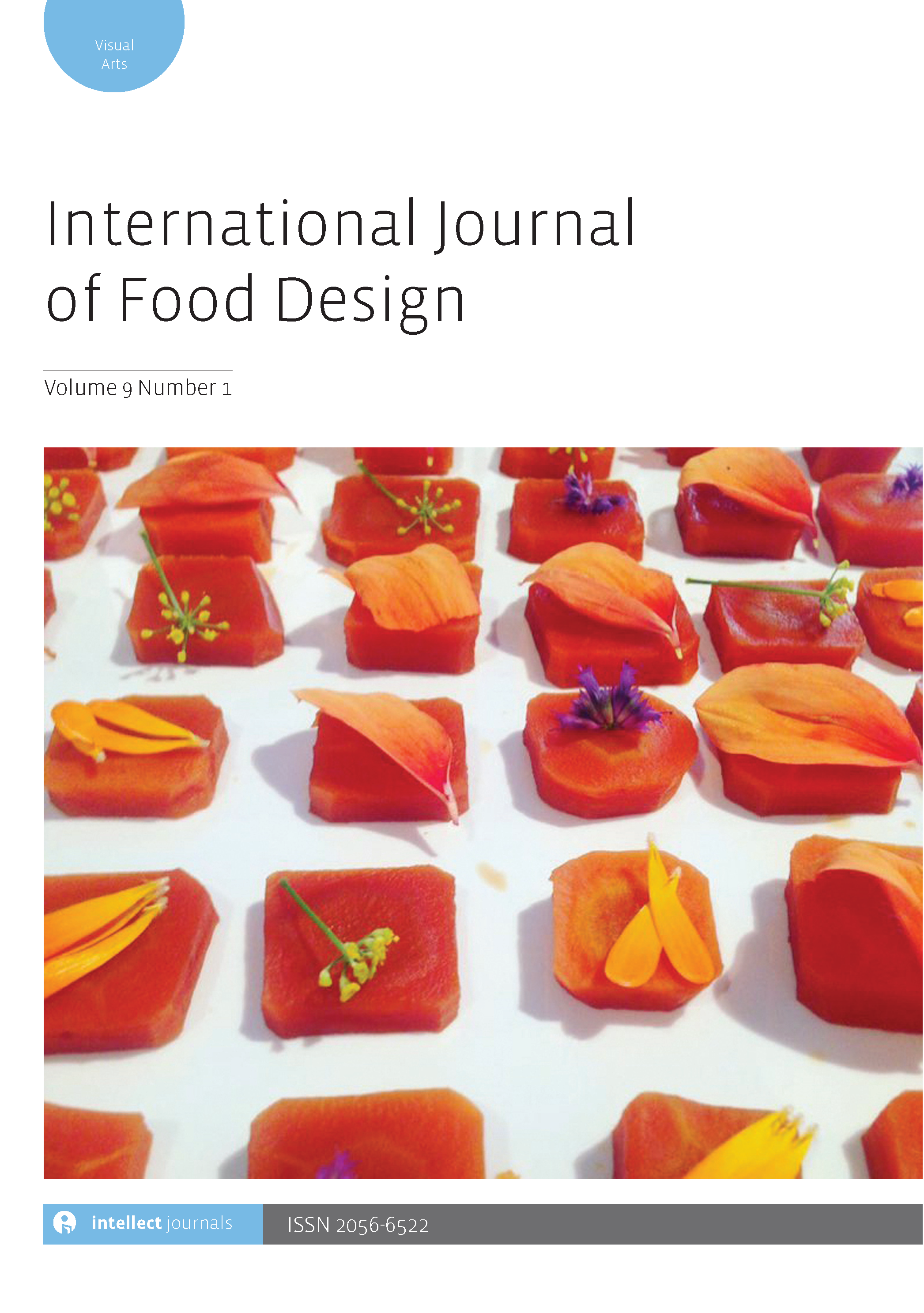-
f Shaping and sharing edible sound: A case study
- Source: International Journal of Food Design, Volume 1, Issue 1, Jan 2016, p. 47 - 64
-
- 01 Jan 2016
Abstract
This article considers a practice-led design research project that asks ‘To what extent can autonomy, circularity and self-reference inform design methods and direct interdependent design outcomes?’
In the project ambient audio recordings are translated into intimate physical experiences. Through parallel iterations of sound recordings, sound spectrum analysis, generative model making, additive manufacturing methods and traditional chocolaterie techniques temporarily intimate representations of the personal world surface.
The potential of Second Order Cybernetics is explored to develop novel experiences that synthesize sound and visual components into dynamic material forms. The individual samples do not act as quotes; instead the patterns operate as generative material for systemic combination. The aim of the research is to obtain a better understanding in systems in which the outcome is unpredictable and individual, and the makers/observers are always present to analyse the act of design as a circular, interdependent investigation into a continuously changing environment.
In a future investigation this dynamic goes beyond imitation to integration, dissolving boundaries and synthesizing new hybrid typologies. The incorporation of living organisms inside the design process is key. The proposed design process inquires into the incorporation of both artificial and natural methods of artefact creation.


